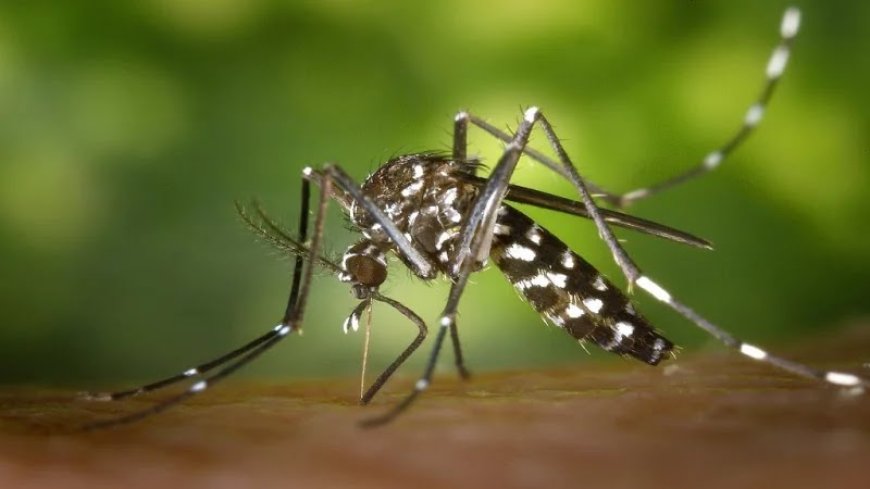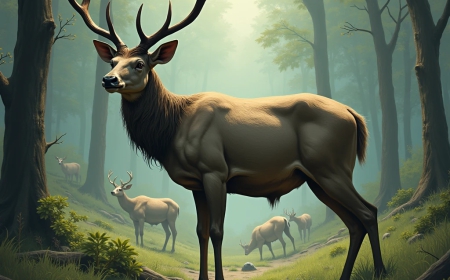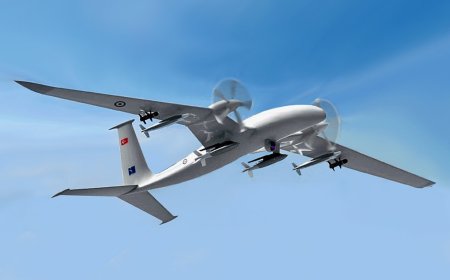A comprehensive analysis of mosquito species and the diseases they transmit.

Detailed information about mosquitoes is given below:
Definition of mosquito:
A mosquito is a small, parasitic insect that usually belongs to the class Hemiptera. Mosquitoes are characterized by their long and pointed mouths, which are used for gathering food.
Mosquito Species:
There are approximately 3,535 species of mosquitoes, but the major species found worldwide include:
Aedes aegypti – Commonly associated with dengue, Zika virus and yellow fever infections.
Aedes albopictus (Aedes albopictus) - responsible for diseases such as chikaroo.
Anopheles gambiae - plays a primary role in malaria transmission.
Culex pipiens - Commonly transmits encephalitis and filarial diseases.
Breeding of mosquitoes:
The mosquito breeding process is generally divided into four stages:
1. Eggs: Mosquito eggs are usually laid in watery places such as ponds, reservoirs or canals. The eggs swim to the surface of the water.
2. Larva: The eggs hatch into larvae, which float on the surface of the water and feed on microscopic food.
3. Pupa: The larva develops into the pupa stage, which is a shrunken state and later develops into a mosquito.
4. Adult mosquito: The pupa emerges as a full-fledged mosquito, which starts life as an adult.
Mosquito food:
The feeding habits of mosquitoes vary by species:
Male mosquitoes mainly consume flower sap and other plant extracts.
Female mosquitoes drink blood, which provides them with the protein they need to lay eggs. Besides drinking blood, they can also eat nectar and sweet substances.
Habitat of mosquitoes:
Mosquito habitat is mainly found in thirsty areas:
Stagnant water: reservoirs, ponds, wetlands where water remains stagnant.
Rainwater: Water that accumulates between tree leaves, drain pans, wells, etc.
In indoor areas: indoors, damp places such as bathroom or kitchen environments.
Mosquito-borne diseases:
Major mosquito-borne diseases:
Dengue: Spread by Aedes mosquito. Symptoms: High temperature, bone pain, and skin rash.
Malaria: Spread by Anopheles mosquitoes. Symptoms: Fever, chills, headache and skin bleeding.
Zika virus: transmitted by the Aedes mosquito. Symptoms: Fever, body aches, redness in eyes.
West Nile Virus: Transmitted by Culex mosquitoes. Symptoms: Fever, headache, and sometimes inflammation of the brain.
Mosquito Control:
Different methods of mosquito control:
Sanitation: Clearing water runoff, improving drainage system.
Use of mosquito nets: Use of mosquito nets indoors.
Different Pesticides: Use of chemical pesticides and natural pesticides.
Germ control: Control of mosquito eggs and larvae.
Among the mosquito species, some bite human blood and some do not. Some important species and their food habits are mentioned below:
Species that bite human blood:
1. Aedes aegypti: Known for dengue, Zika virus, and yellow fever.
2. Aedes albopictus: responsible for Chikaroo virus and other diseases.
3. Anopheles gambiae: plays a major role in malaria transmission.
4. Culex pipiens: responsible for encephalitis and filarial infections.
Species that do not bite human blood:
1. Male mosquitoes: Usually male mosquitoes do not bite human blood. They subsist by feeding on flower juices and other sweet liquids.
2. Some female mosquitoes: Some species of female mosquitoes do not bite human blood, they only feed on plant fluids, flower nectar, or other organic fluids.
Why do mosquitoes bite human blood?
- Protein requirement: For female mosquitoes, blood contains protein which is necessary for egg laying. They support their reproductive process by biting for blood.
Food habits of non-biting mosquito species:
- Flower juices and sweet liquids: Most species of non-biting female mosquitoes consume plant juices, flower nectar, and other sweet substances.
- Water organic matter: Some species may also feed on organic matter in water bodies and small aquatic organisms.
Thus, the feeding and blood-feeding habits of mosquitoes depend on their species, and this is an important process for their life cycle and reproduction.
Source :
1. World Health Organization (WHO)
Title: "Vector-borne diseases"
Link: [WHO Vector-borne Diseases](https://www.who.int/news-room/fact-sheets/detail/vector-borne-diseases)
Details: WHO’র এই ফ্যাক্টশিটে মশার মাধ্যমে ছড়ানো রোগ যেমন ডেঙ্গু, ম্যালেরিয়া, এবং জিকা ভাইরাস সম্পর্কে তথ্য রয়েছে।
2. Centers for Disease Control and Prevention (CDC)
Title: "Mosquito Life Cycle"
Link: [CDC Mosquito Life Cycle](https://www.cdc.gov/mosquitoes/about/life-cycle.html)
Details: CDC’র এই পৃষ্ঠা মশার জীবনচক্রের চারটি ধাপ - ডিম, ল্যার্ভা, পিউপা, এবং প্রাপ্তবয়স্ক অবস্থার বিস্তারিত বর্ণনা প্রদান করে।
3. Nature Reviews Microbiology
Title: "Mosquito-borne diseases and their vectors"
Authors: A. M. Donnelly and C. G. Koenraadt
Link: [Nature Reviews Microbiology](https://www.nature.com/articles/s41579-019-0291-7)
Details: মশার মাধ্যমে ছড়ানো প্রধান রোগ এবং তাদের ভেক্টর সম্পর্কে বিস্তারিত পর্যালোচনা।
4. Journal of Medical Entomology
Title: "Mosquito-Borne Diseases and Their Control"
Authors: Michael J. R. and Samantha L. M.
Link: [Journal of Medical Entomology](https://academic.oup.com/jme)
Details: এই জার্নালে মশার প্রজাতি, জীবনচক্র, সংক্রমিত রোগ, এবং নিয়ন্ত্রণের কৌশল নিয়ে গবেষণা প্রকাশিত হয়।
5. American Journal of Tropical Medicine and Hygiene
Title: "Mosquitoes and the Pathogens They Transmit"
Authors: Elizabeth A. R. and John M. D.
Link: [AJTMH - Mosquitoes and Pathogens](https://www.ajtmh.org/content/early/2022/11/29/ajtmh.22-0217)
Details: মশার প্রজাতি এবং তাদের মাধ্যমে ছড়ানো রোগের বিস্তৃত বিশ্লেষণ।
~ Humaira Nujum















































